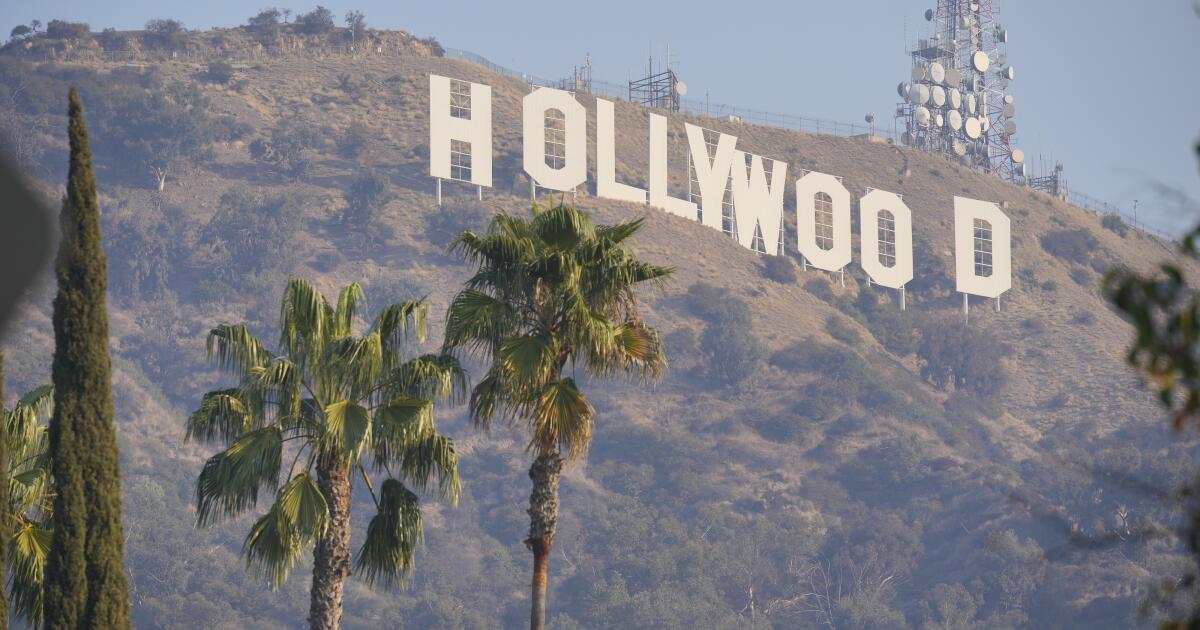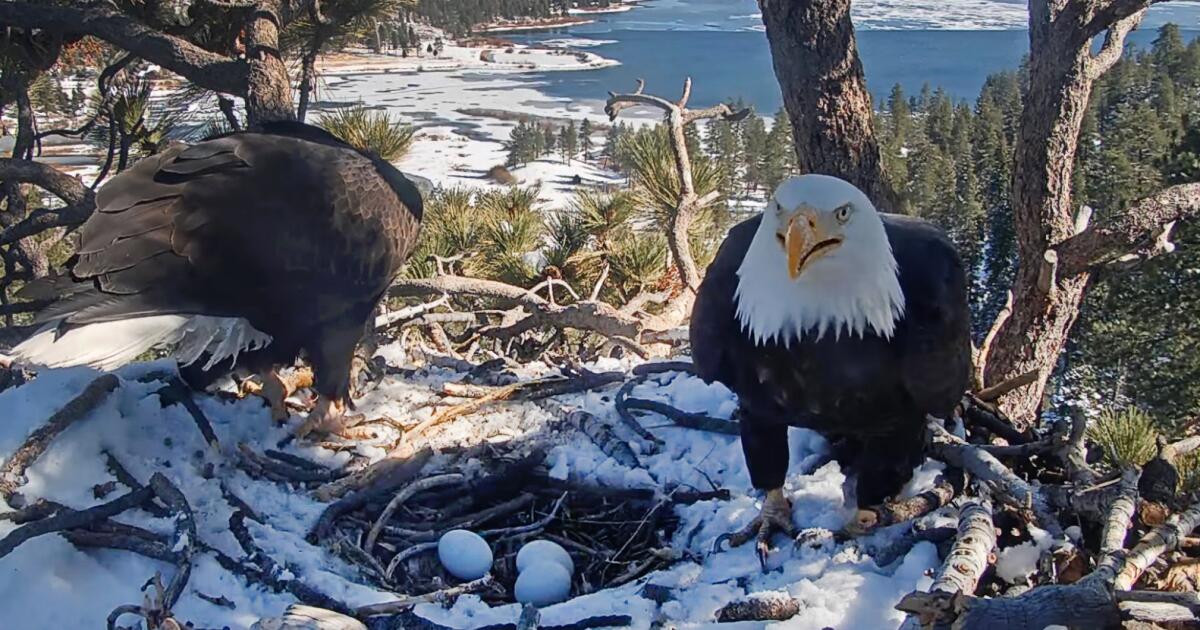Debunking social media fire myths: No, the Hollywood sign didn’t catch fire

As soon as the Sunset fire started burning in Runyon Canyon in the Hollywood Hills on Wednesday evening, an AI-generated image of the burning Hollywood sign quickly went viral on social media.
It was just one example of misinformation surrounding the Los Angeles wildfires spreading on social media, and experts warn that misinformation during natural disasters hampers rescue efforts and damages public trust.
Fact check: The Hollywood sign is still standing and intact, confirmed Jeff Zarrinnam, chairman of the Hollywood Sign Trust.
When Zarrinnam, a resident of the Hollywood Hills area, received warnings to leave the area, he remained guarding his home and the historic landmark that he clearly saw where he lived.
“There was nothing going on in or around the Hollywood sign itself,” he said. “The fire was west of the 101 Freeway and the Hollywood sign is east of the 101 Freeway.”
Another rumor on social media related to the Palisades fire is that the firefighters ran out of water because the Palisades reservoir was empty. Social media users are sharing a clip of an interview in which developer and mayoral candidate Rick Caruso, owner of the Palisades Village shopping center, said the reservoir “wasn’t filled in a timely manner to keep the water lines running.”
Fact check: One reservoir – the Santa Ynez Reservoir – is closed for maintenance. The Santa Ynez Reservoir holds 117 million gallons of water and is located in the heart of the Palisades.
But the closing of the lake is not the main reason why the water mains in the upper reaches of the Palisades ended.
Had the reservoir been operating, it would have increased water pressure in the Palisades Tuesday night, said former DWP General Manager Martin Adams, an expert on the city’s water system. But only for a while. The pressure was yet to drop significantly due to the high demand for water.
At a news conference Wednesday, officials said the Palisades area drew “quadruple demand… for 15 hours straight, reducing water pressure.” The last three tanks in the Palisades hills started running dry at 3 a.m. Wednesday.
“Those tanks help with the pressure of the firefighting equipment in the hills of Palisades, and because we were pushing a lot of water in our trunk line, then a lot of water is used. … we couldn’t fill the tanks fast enough,” said Janisse Quiñones, LADWP chief executive officer and chief engineer. “So the water consumption was faster than what we could give you through the trunk line.”
Adams said the reservoir, if used, would have extended the time before the pressure dropped but would not have prevented the inevitable, given the high demand.
Misinformation hampers officials trying to provide updated emergency information but they should take time to deal with false statements or photos shared online, said Jose Ramirez-Marquez of the Stevens Institute of Technology. He is a co-author of a recently published study that analyzed public conversations on social media about hurricane warnings and other emergency response information.
During a natural disaster, people stay on social media (X, Instagram, Bluesky) and private messaging groups (Whatsapp, Facebook groups) looking for real-time updates because it’s free and fast, according to research.
Misinformation can manipulate an emotional situation, divert conversations from urgent information and, in some cases, lead to financial fraud, according to the US Department of Homeland Security.
In many cases, people who spread false information want to be helpful but do not verify the information they are transmitting, said Iskander Sanchez-Rola, director of innovation for cybersecurity network Gen.
As Juvare, an emergency preparedness and disaster management software company, notes: During a hurricane or wildfire, rumors about road closures, available shelters or the path to disaster can cause people to take unnecessary risks, putting themselves and others at risk.
Unfortunately, there is no way to avoid false information, says Sanchez-Rola. It’s unreasonable to expect people to stay off social media because official sources including first responders, disaster preparedness agencies, local officials and emergency response organizations share their information there.
They can, however, take steps to identify misinformation and avoid sharing it on social media or in private conversations, he said.
He and other sources shared some guidelines on how to identify fake posts:
Pause for a moment. Take a moment to digest what you read. People use information on social media so quickly that they may not recognize when the information is not only false but also a scam – a fake charity attempt to defraud vulnerable people, for example.
Notice how the post makes you feel. You may already have a sense of urgency due to a natural disaster, and disinformation posts have headlines or captions meant to play on those feelings.
Research before sharing. Don’t immediately click to share content you see online without doing a little digging about it first.
Ask the source. Check who the author/owner of the post and social media account is. You should also refer to information posted about what local and state government officials, first responders, disaster relief agencies, recognized non-profit organizations and reliable media sources say on their official websites. If it’s a charity, you can verify its eligibility by checking with the Charity Navigator and GuideStar tools.
If you are looking to check if an image is fake or AI generated, you can use the Google Reverse Image Search Tool to find out the origin of the image or if it has been edited.
Investigate the matter. Conduct thorough, unbiased investigations into controversial issues by looking at what reliable sources say and consider other points of view, advises the Cybersecurity and Infrastructure Security Agency.
Staff writer Matt Hamilton contributed to this report.
Source link


